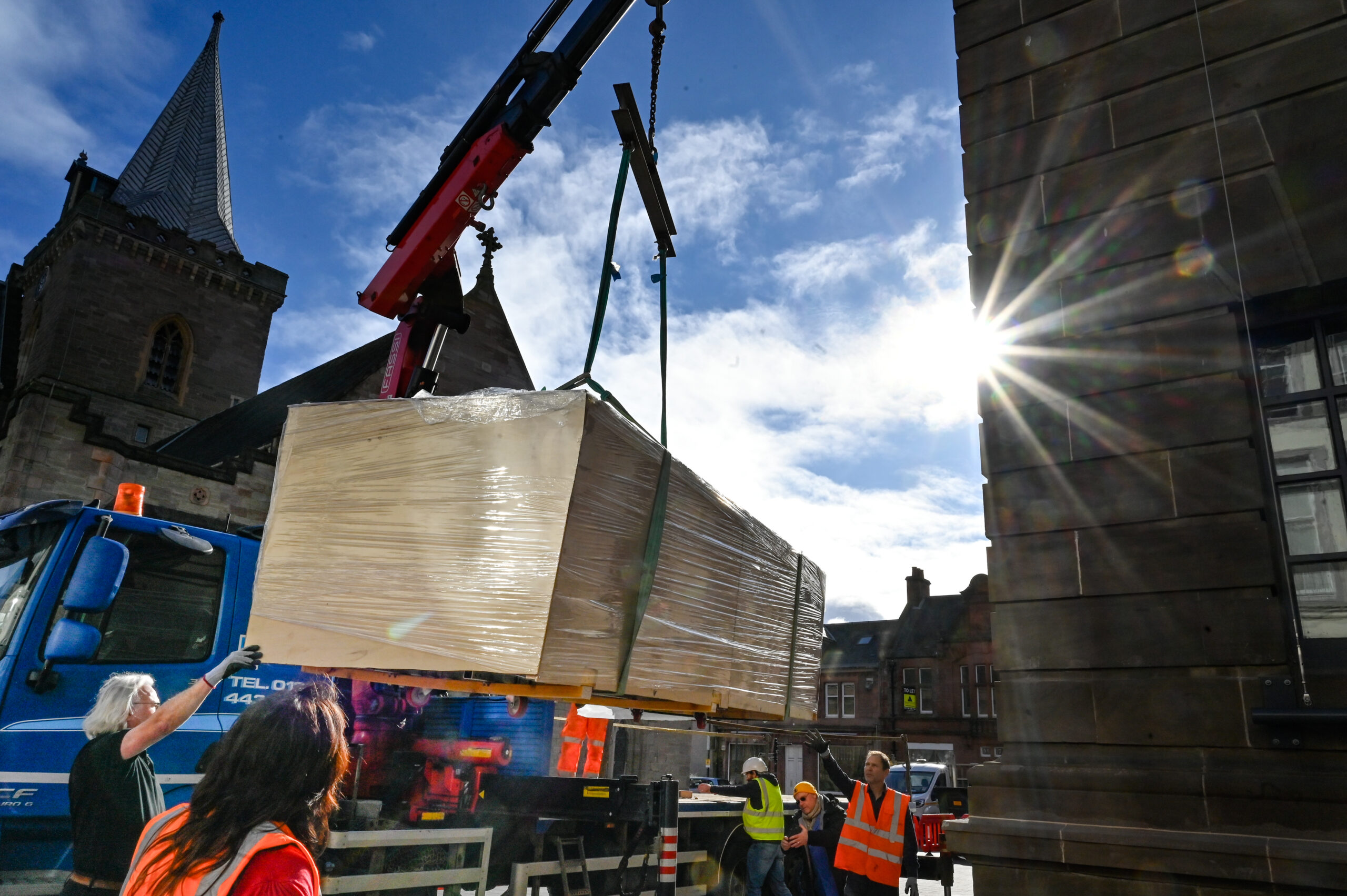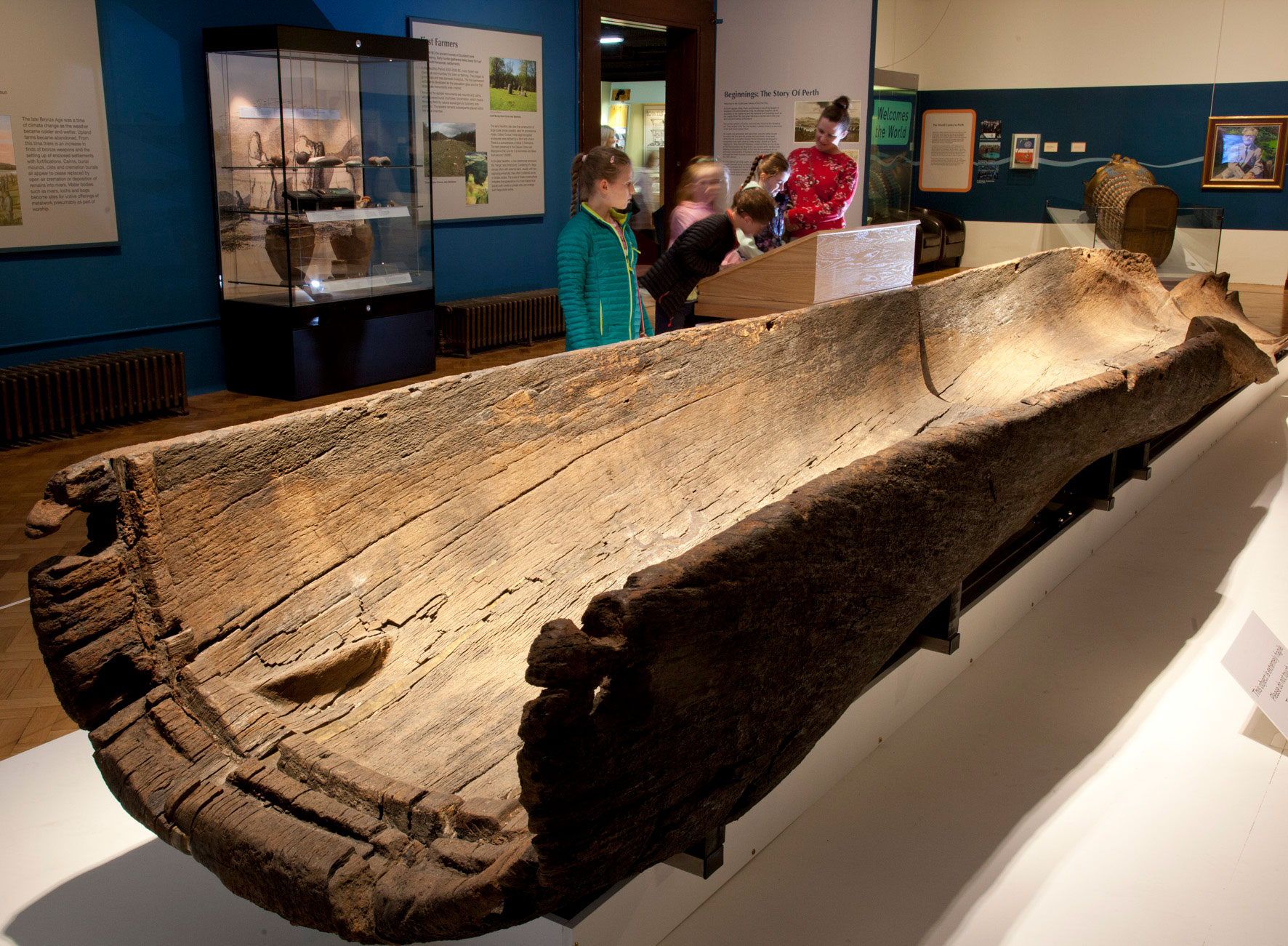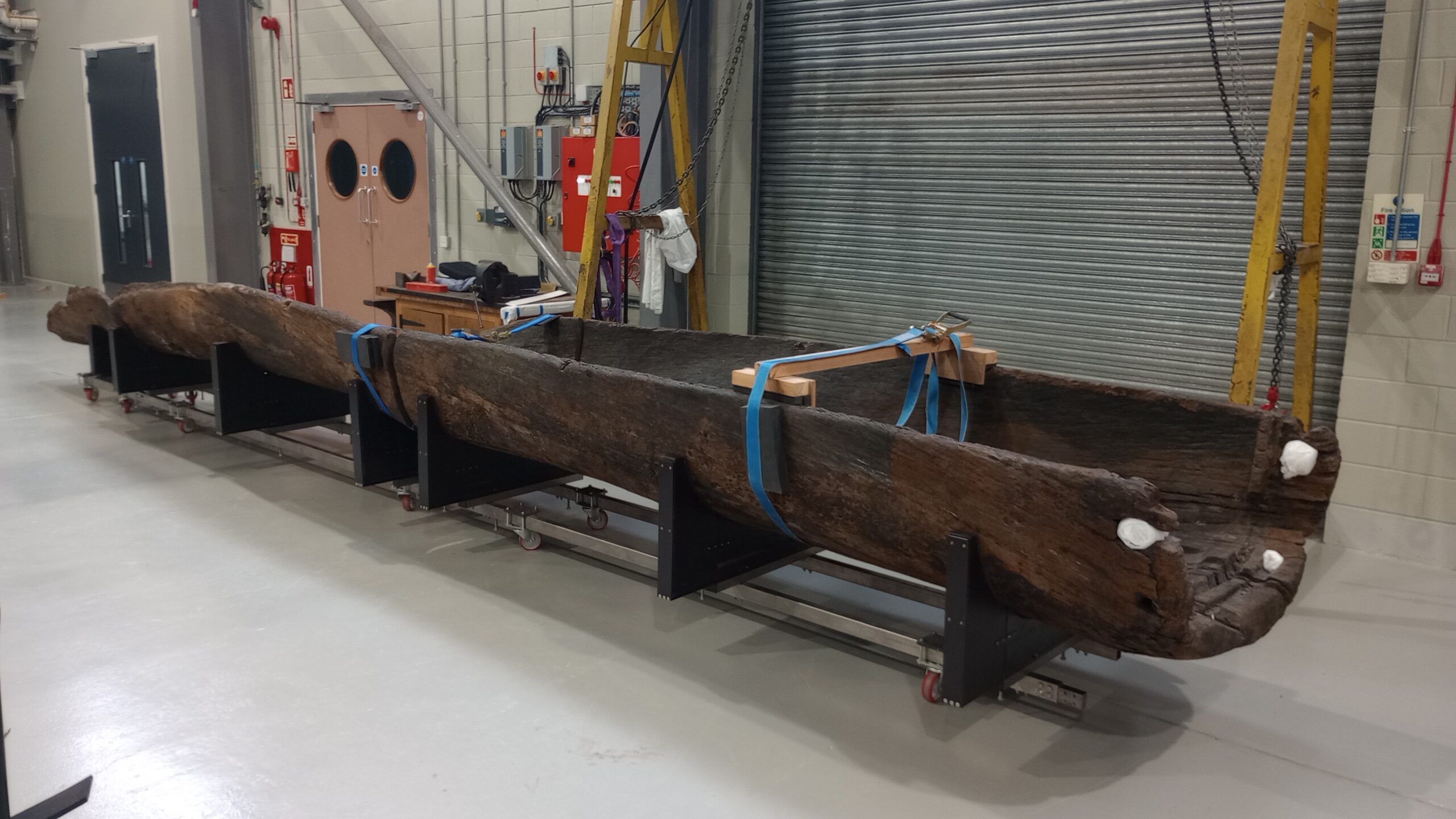Enter a search term above to search our website
Pages
News
Star Objects
Thursday 12th October 2023
Today, one of the highlights of Perth’s collection, the 3,000 year old Carpow Logboat, moves into Perth Museum, opening Spring 2024. This new, home for one of the oldest public collections in Scotland has been created within the historic fabric of the former City Hall in the centre of Perth.

A team of conservation experts bring in a section of a 3000 year old 9m logboat found in River Tay into the Perth Museum in the former City Halls inside the city centre. The logboat is a major exhibit which will go on display when the new museum opens its doors in Spring 2024. Photo. Julie Howden.
The Carpow Logboat is one of the first objects to enter the new museum and at 9 metres long is also the largest object going on display. Carved from a single 400-year-old oak tree trunk, it then lay buried in the banks of the River Tay, near Perth, for 3,000 years until it was discovered 22 years ago. It was acquired by Perth & Kinross Council for display and preservation at Perth Museum & Art Gallery, with generous support from the National Fund for Acquisitions. The new displays for Perth Museum have been created by Culture Perth & Kinross, the charitable trust responsible for the delivery and development of the museum, gallery, archive and library, and creative learning in Perth and Kinross.
The logboat is returning to Perth after a year of specialist conservation work at the National Museums Collection Centre in Edinburgh. After 10 years on display at Perth Museum & Art Gallery, the wood had started to ‘unroll’ and flatten out. National Museums Scotland conservators have undertaken delicate reshaping work and crack repairs to stabilise the ancient structure and adapt the display cradle to ensure the object is preserved for future generations. Specialist electric blankets were used as part of the treatment to warm up the wood before gently bending the fragile structure back to its original shape.
One of the most exciting archaeological discoveries made in Tayside this century, the logboat was first officially reported in 2001 in the mudflats at Carpow during a summer of exceptionally low river levels. An archaeological assessment, led by Perth & Kinross Heritage Trust, established that the protruding wood was a 9m/30ft long logboat.

Carpow Logboat, 1,000 BC, oak. On display at Perth Museum and Art Gallery in 2017 before latest conservation at National Museums Scotland . Photo, Culture Perth and Kinross
The vessel is a rare survival of the Bronze age due to the peaty soil composition of the Perth and Tay Estuary area, a unique environment that preserves ancient organic material that would usually be lost to time. Radiocarbon-dated to around 1,000 BC, the logboat is one of the oldest and best-preserved of its kind in Scotland, giving a tantalising glimpse of the thriving life and advanced technology of the past on Perth’s doorstep.
The boat could have been used for a range of purposes, from a cargo craft, fishing vessel, a platform from which to make offerings in the middle of the river, or as a ferry for up to 14 people. The Carpow stretch of the river had several ferry sites as recently as the 19th century, some of them operational since at least the Roman Iron Age. The boat’s find-spot was close to one of the busiest of these crossings.
Following its discovery and painstaking excavation in the summer of 2006, the waterlogged boat spent six years undergoing stabilisation of the saturated timbers and controlled draying at the National Museums Collection Centre, originally led by Senior Artefact Conservator Dr Theo Skinner and assisted by Jane Clark and Charles Stable. Charles also undertook the latest conservation work to return the boat to its original shape.
Charles Stable, Artefact Conservator at National Museums Scotland, said: “It’s been a privilege to work on this fascinating object, not only when it was discovered, but now in preparation for its redisplay. Although it’s large and heavy, it’s also very fragile, making the conservation work rather complex. The wood naturally wants to relax and flatten out, so we’ve had to gently warm it up, making it more pliable and allowing us to reshape it.
“I’ve become very familiar with the boat over years of working on it and the small details I’ve noticed are incredible; footrests for the pilot, for example, which really made me think about the people who used it. I look forward to seeing it redisplayed and recontextualised in this exciting new space.”

Carpow Logboat with new supports at the National Museums Collection Centre. 1,000 BC, oak. Perth Museum. Photo, National Museums Scotland
When the logboat returns to public display in 2024, it will be shown alongside some of the other fascinating Bronze Age finds from the river, notably swords and other metalwork that highlight the importance of the River Tay in everyday and ceremonial life.
Mark Hall, Collections Officer with Culture Perth & Kinross, who has been working with the boat since its discovery, said, “It is a very exciting prospect to think of the boat having undergoing further, innovative, conservation so that it can return to Perth in its best possible shape and be able, once again, to thrill visitors with its rich insights into how people have lived on, in and around the River Tay.”
For the first time, these Bronze Age treasures of Perth will be viewed alongside the Stone of Destiny, also known as the Stone of Scone, one of Scotland and the UK’s most significant historical objects. Returning to Perthshire for the first time in over 700 years, the Stone will be the centrepiece of the new museum and will be free for all to view.
Conservation and installation of the Carpow Logboat was undertaken by National Museums Scotland and Graciela Ainsworth Sculpture Conservation, funded by donations from Whisky Auctioneer Ltd.